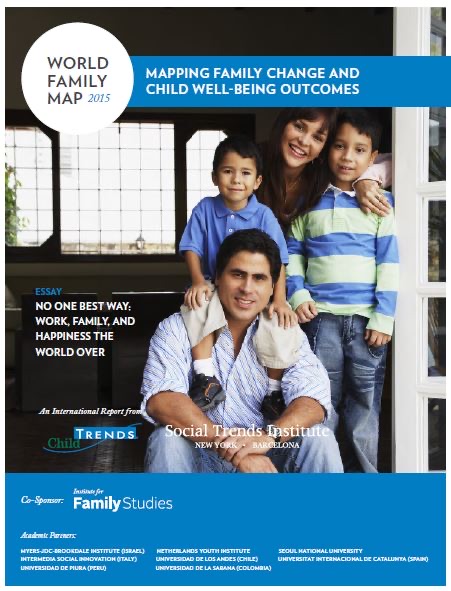The release of the 2015 World Family Map Report marks STI’s third year sponsoring the project.
This year, the principle essay, titled “No One Best Way: Work, Family and Happiness the World Over” focuses on work-family arrangements. The 2015 report additionally includes a supplement reviewing the division of paid and domestic work among Peruvian couples.
The report uses World Family Indicators to assess:
- Family Structure: Family structure refers to whom a child lives with, including parents and other family members, and the relationships between them.
- Family Socioeconomics: The economic conditions people experience in childhood can exercise a large influence on their development. The indicators in this section include poverty, undernourishment, parental education and employment, and public benefits for families.
- Family Process: Family processes describe how families operate: how family members interact with one another, how often they spend time together, and whether they are satisfied with their family lives. These processes can influence the lives of individual family members, in either positive or negative directions.
- Family Culture: The family culture indicators monitor national attitudes and values on family issues. They describe the cultural climate in which children grow up.
The inaugural edition of the World Family Map provided indicators of family well-being worldwide and an essay focusing on family living arrangements and education outcomes. The 2014 edition provided updated indicators and a new essay focusing on union stability and early childhood health in developing countries, as well as a brief analysis of psychological distress among 9- to 16-year-olds in the European Union, in a supplement titled “Family Structure Across Europe and Children’s Psychological Health.”
Download the Report in English and in Spanish.
